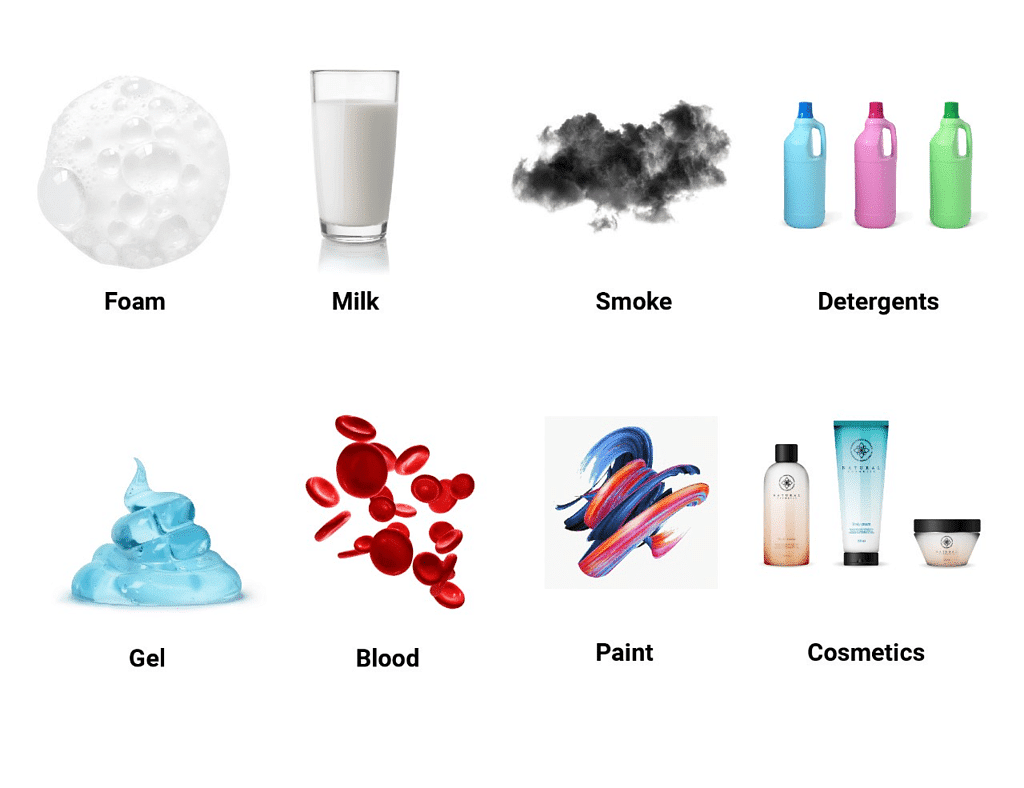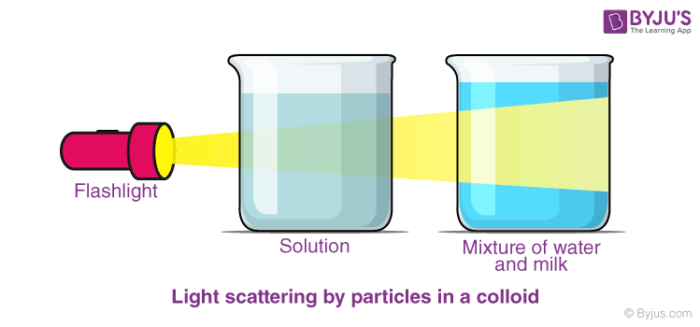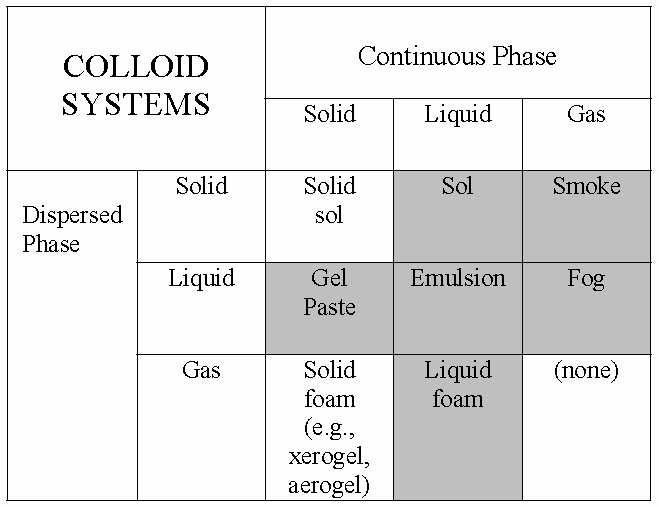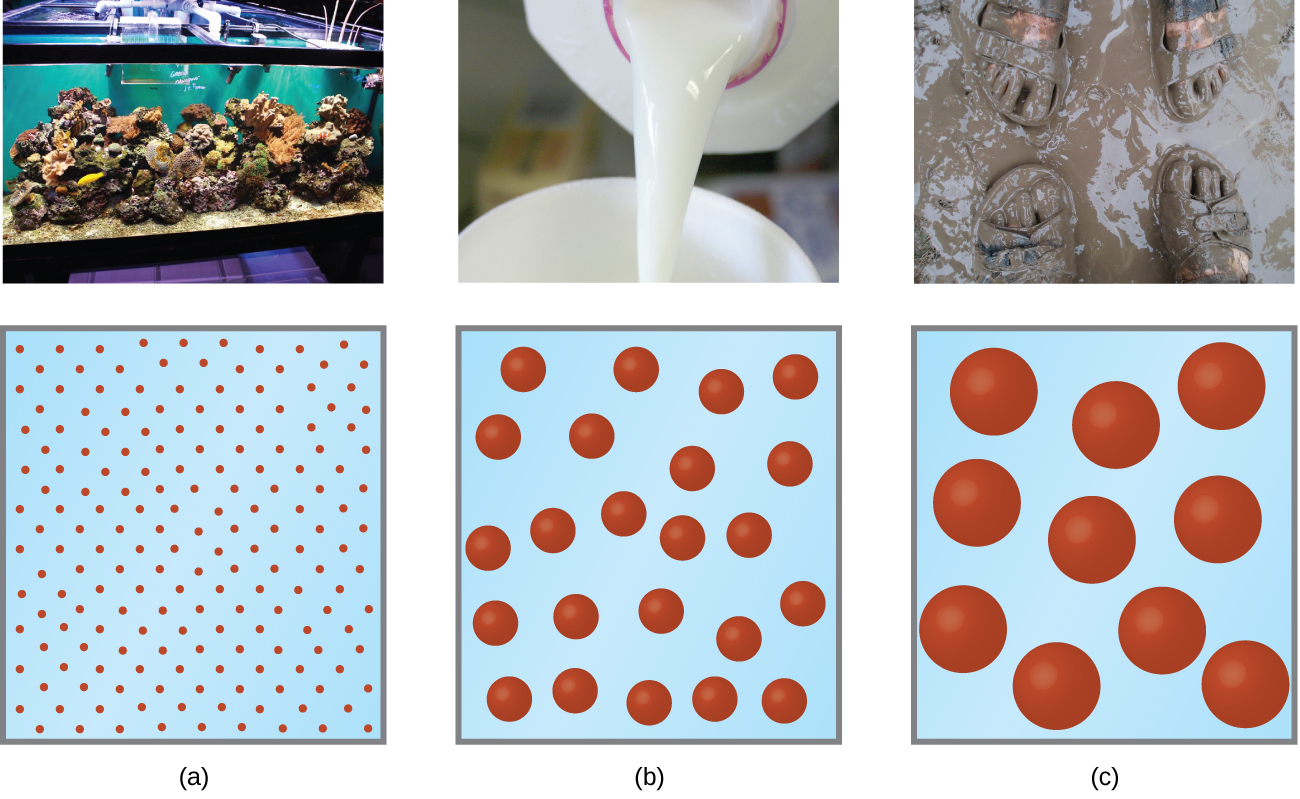how is paint made that it can be classified as a colloid
Described in detail in Chapter 3 and colloid stability lack of aggregation is dis-cussed in Chapter 4. When we make gelatin such as Jell-O we are making a type of colloid.

Is Paint A Colloid Techiescientist
These particles may be either dissolved macromolecules or having macromolecular structures formed from smaller structural units or they may constitute a separate phase as in aerosols powders pigments dispersions emulsions or even finely.

. Paint is a colloid due to being dispersed and mixed with a couple different substances. Colloids occur widely in nature as well as are manufactured synthetically. In a colloid particles of one substance are mixed and disperswed with particules of another substance- they are not dissovled in it.
Colloids A colloid is a mixture whose particles range in size from 1 nm to 1000 nm and do not settle out on standing. Heavy cream latex paint jelly. When considering a paint formulation one must know the specific interaction.
How do you make a colloid. The particles of colloids are larger than those found in a solution. When the paint stirs slowly tiny pigment particles become suspended and spread evenly all over the liquid.
When paints are manufactured the pigments are very finely ground often with the binder to create a particle size that is colloidal. Dried paint is typically considered to be a colloid as the dispersed particles are indefinitely spread throughout the binder dispersing medium. Paint is classified a colloid.
A colloid is a homogenous of two phases which are the dispersed phase and the dispersion medium. Some definitions specify that the particles must be dispersed in a liquid while others extend the definition to include substances like aerosols and gelsThe term colloidal suspension refers unambiguously to the overall mixture. The dispersed phase is analogous to the solute of the true solution while the dispersion medium is analogous to the solvent.
The pigment is added to the resulting liquid of the solvent and binding medium. To be classified as a colloid the substance in the dispersed phase must be larger than the size of a molecule but smaller than what can be seen with the naked eye. Paint is a colloid due to being dispersed and mixed with a couple different substances.
How is paint made that it can be classified as a colloid Monday March 14 2022 Edit This table contains information on each unique technology nominated for the Presidential Green Chemistry Challenge from 1996 through 2016. Let us learn about them here. This can be more precisely quantified as one or more of the substances dimensions must be between 1 and 1000 nanometers.
There are no definite boundaries between the substance and the surrounding media. For example paint pigments are produced by dispersing large particles by grinding in special mills. If the dispersed phase has an affinity for the dispersion medium the colloid is called a lyophilic colloid.
As a consequence these substances are called paints or dyes. In an paint the pigmanet is dispersed in the liquid from the binding medium and solvent solution. They are classified on the basis of different properties of the dispersed phase and the medium.
Thus even if the dispersed phase is separated from the. Gelatin sets on cooling because the hot aqueous mixture of gelatin coagulates as it cools and the whole mass including the liquid sets to an extremely viscous body known as a gel a colloid in which the dispersing medium is a solid and the dispersed phase is a liquid. The colloidal particles are distributed in a dispersing medium which can be a solid liquid or a gas.
The words lyo and philic means liquid and loving respectively. Since these have a wide industrial application it is important to have a proper system for classification of colloids. Why is paint a colloid.
A colloid is a mixture in which one substance consisting of microscopically dispersed insoluble particles is suspended throughout another substance. Learn vocabulary terms and more with flashcards games and other study tools. Up to 24 cash back Paints are a type of mixture called a colloid.
That is growth from smaller units such as molecules or ions. Dyes Dyes are substances that can be used to colour fabrics. The pigment is added to the resulting liquid of the solvent and binding medium.
The colloids they are inhomogeneous mixtures made up of a dispersed phase which is almost always a solid with very small particles and a dispersing or continuous phase which is generally liquid or gaseous. For example a motor car paint can enhance the appearance of the car body by providing color and gloss and it also protects the car body from corrosion. Based on the nature of the interaction between the dispersion medium and the dispersed phase colloids can be classified into lyophilic and lyophobic.
Colloids refer to dispersions of small particles usually with linear dimensions from around 1 nm to 10 micrometres. This uniform dispersion of pigments is called a colloid. Here are some common examples.
Examples of colloids a Gas dispersed in liquid foams Whipped cream consists of tiny air bubbles.

Lesson Video Colloids And Suspensions Nagwa

Question Is Paint A Colloid Seniorcare2share

Introduction To The Colloid Chemistry And Surface Phenomena

Is Paint A Colloid Techiescientist

What Is Colloidal Suspension Examples Of Colloidal Suspensions

Examples Of Colloids Notes Study Chemistry For Jee Jee

Applications Of Colloids Definition Uses Of Colloids With Videos Faqs

Is Paint A Colloid Techiescientist

What Is A Colloidal Solution Introduction Colloid Types Video Example

Class Definition For Class 516 Colloid Systems And Wetting Agents Subcombinations Thereof Processes Of Making Stabilizing Breaking Or Inhibiting

Introduction To The Colloid Chemistry And Surface Phenomena

What Is A Colloidal Solution Introduction Colloid Types Video Example

Research Brochure Colloidal Dispersions Group By Cebcambridge Issuu

Lesson Explainer Colloids And Suspensions Nagwa

Types Of Colloids And Examples Of Colloids Youtube

1 Classification Of Colloidal Systems After 2 Download Table

